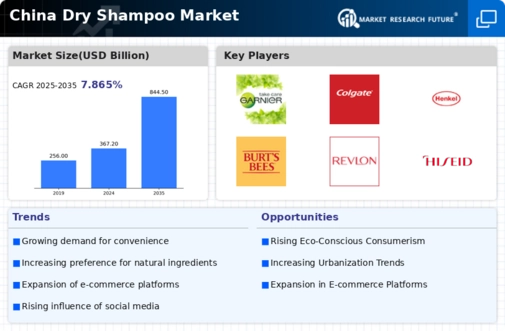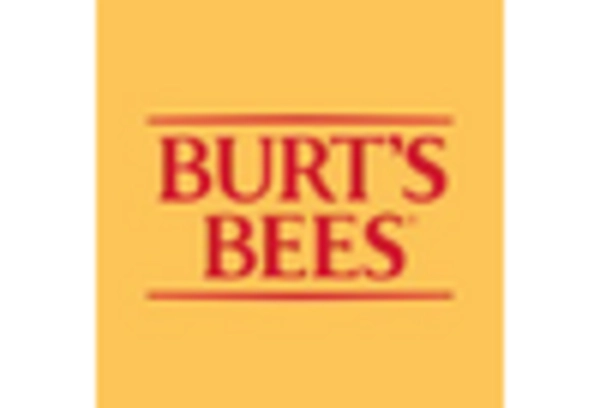The dry shampoo market exhibits a dynamic competitive landscape, characterized by rapid innovation and evolving consumer preferences. Key growth drivers include the increasing demand for convenience products and a growing awareness of personal grooming. Major players such as Procter & Gamble (US), Unilever (GB), and L'Oreal (FR) are strategically positioned to leverage these trends. Procter & Gamble (US) focuses on product innovation and sustainability, while Unilever (GB) emphasizes digital transformation and consumer engagement. L'Oreal (FR) is investing heavily in research and development to enhance product efficacy and appeal. Collectively, these strategies foster a competitive environment that prioritizes innovation and consumer-centric approaches.
In terms of business tactics, companies are increasingly localizing manufacturing to reduce costs and enhance supply chain efficiency. The market structure appears moderately fragmented, with several key players holding substantial market shares. This fragmentation allows for niche brands to thrive, while larger companies benefit from economies of scale. The collective influence of these key players shapes market dynamics, as they compete not only on product quality but also on brand loyalty and consumer trust.
In October 2025, Unilever (GB) announced a partnership with a leading tech firm to integrate AI into its product development processes. This strategic move aims to enhance consumer insights and streamline product formulation, potentially leading to more tailored offerings in the dry shampoo segment. The integration of AI could significantly improve Unilever's ability to respond to market trends and consumer preferences, thereby strengthening its competitive position.
In September 2025, L'Oreal (FR) launched a new line of eco-friendly dry shampoos, emphasizing sustainability and natural ingredients. This initiative aligns with the growing consumer demand for environmentally responsible products. By prioritizing sustainability, L'Oreal not only addresses consumer concerns but also differentiates itself in a crowded market, potentially attracting a more environmentally conscious demographic.
In August 2025, Procter & Gamble (US) expanded its distribution channels by entering into a strategic alliance with a major e-commerce platform. This move is likely to enhance product accessibility and visibility, catering to the increasing trend of online shopping. By leveraging digital platforms, Procter & Gamble (US) can reach a broader audience and adapt to changing consumer purchasing behaviors.
As of November 2025, current competitive trends in the dry shampoo market include a strong emphasis on digitalization, sustainability, and AI integration. Strategic alliances are increasingly shaping the landscape, enabling companies to enhance their operational capabilities and market reach. Looking ahead, competitive differentiation is expected to evolve, with a shift from price-based competition to a focus on innovation, technology, and supply chain reliability. Companies that can effectively integrate these elements into their strategies are likely to gain a competitive edge in the marketplace.

















Leave a Comment